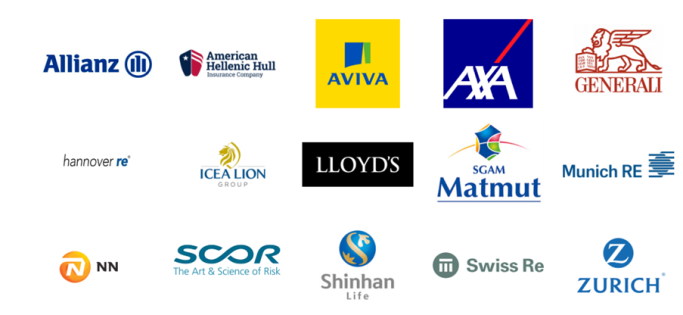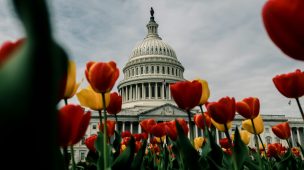2021: ESG in retrospect
2 January, 2022 Izak Vickers
As part of our series on ESG, Oxbow Partners present a review of ESG in 2021. Its effect on all industries and more specifically the impact it has had on the insurance industry, including the commitments and initiatives that have been made by General and Lloyd’s insurers throughout the year.
Other recent Oxbow Partners articles on ESG
10 ESG trends for 2022 →
ESG: A primer for insurance executives →
ESG and the insurance industry →
10 technologies improving ESG in insurance →
Risks and opportunities for insurers from the ESG wave →
UN COP26
The major event of the year was undoubtedly COP26 which took place in November, where delegates from over 200 countries attended the summit to discuss how they can accelerate action towards the goals set out in the Paris Agreement formed. Whilst some argue that the outcomes of the summit did not go as far as they should, 153 countries introduced new or updated emissions targets known as Nationally Determined Contributions (NDCs). Meaning that over 90% of world GDP and around 90% of global emissions are covered by net-zero commitments.
Additional measures delivered at COP26 include mobilising $20bn in funds to support the transition from coal power to clean energy in addition to the 190 countries that have agreed to phasing down the use of coal power. These measures will have ramifications for every industry as governments apply pressure on companies within their jurisdiction to reduce emissions and support the energy transition, with the (re)insurance industry being no different.
Those (re)insurers who are yet to formalize a strategy for achieving net-zero internally and in their investment portfolios will face calls to do so and – specific to insurance – stakeholders will demand that controversial product lines, such as coal & other high-carbon industries, are phased out of the underwriting portfolio.
Taskforce for Climate-related Financial Disclosures (TCFD) Published 2021 Status Report
On the 14th of October, the Task Force for Climate-related Financial Disclosures (TCFD) released their annual status report on TCFD-aligned disclosures by firms. The TCFD is a task force created by the Financial Stability Board (FSB) to improve and increase the reporting of climate-related financial information. Headlines from this year’s status report are:
- Disclosure of climate-related financial information aligned with the TCFD’s recommendations has grown by nine percentage points from 2020 compared to a growth of four percentage points over the previous year
- Greater than 50% of firms are now disclosing climate-related risks and opportunities in their annual reports
During 2021 multiple jurisdictions have proposed or finalized a regulation to require disclosures aligned with TCFD recommendations, with many of these set to become law in 2022. Consequently, some of the largest global insurers have already begun taking action to align their financial disclosures with TCFD recommendations. As these recommendations become regulation in more countries, insurers will have to align internally with the TCFD framework to avoid regulatory attention.
UK Government Announced New Sustainability Disclosure Requirements
The UK this year became the first G20 country to make it mandatory for its largest businesses to disclose their climate-related risks and opportunities. The UK has aligned its mandatory disclosures framework with the recommendations of the TCFD becoming the first G20 nation to enshrine this framework in law. Legislation announced by the UK Chancellor in the build up to COP26 is set to come into force in April 2022 and is a critical part of the UK’s landmark Net Zero Strategy and the government’s commitment to making the nation’s financial system the greenest in the world.
This new legislation will have a notable impact on the (re)insurance industry due to the size of the UK insurance market, accounting for 5.4% of total world GPW in 2020, with companies that have a UK presence now being legally required to make mandatory climate-related disclosures. Moreover, expect many other G20 nations to follow the UK’s lead by introducing a legal framework aligned with the TCFD recommendations.
The Bank of England Published the Climate Biennial Exploratory Scenarios (CBES) 2021
The CBES is an exploratory and learning exercise run by the Bank of England to help size the risks of climate change for the largest banks, insurers, and the UK’s entire financial system. Three scenarios of early, late, and no additional action were modelled to explore two risks from climate change:
- “Transition risks” are the risks arising from the structural changes required to the UK economy to achieve net zero emissions
- “Physical risks” are the risks associated with an increase in global temperatures
2021 was the first year that insurers were included in the CBES allowing it to capture the interaction between banks and insurers and understand the risk climate changes presents to the entire financial system. Insurer’s participation in the CBES focused on assessing the risks posed to their assets & liabilities and filling in the CBES questionnaire. The qualitative CBES questionnaire is designed to capture participants’ views on climate risks, their approach to climate risk management, and their potential management actions. For insurers participation in this exercise should help to develop experience and expertise in modelling climate-related risks and should stretch the time horizon over which they assess climate risks.
Net-Zero Insurance Alliance (NZIA) Established
Launched on 11th July 2021, the Net-Zero Insurance Alliance was convened by the UN and brought together fifteen of the largest (re)insurers in the world who committed to playing their role in the transition to net-zero emissions economies by achieving net-zero GHG emissions in their underwriting portfolios by 2050. Many are turning to the insurance industry to play a key role in supporting the transition to a net-zero economy due to the role insurers play as risk managers and investors in the economy.
NZIA members have committed to setting ‘science-based’ targets every five years and to report on their own progress yearly in their annual reports. Industry-wide alliances are vital as insurers position themselves to be seen as making tangible progress towards ESG goals whilst not forfeiting an advantage to their competitors. 2021 has seen progress in bringing the biggest players in the industry around the same table to make unified commitments and outline a pathway for moving forward. Oxbow Partners expect insurers to utilize these industry-wide alliances (e.g. PSI) to forward progress in reducing coverage of controversial product lines, such as thermal coal, within underwriting portfolios safe in the knowledge that they will not be giving business to competitors.

Lloyd’s Accelerated Market Oversight Regarding ESG. Click to enlarge
Lloyd’s announcement in October that they would be mandating managing agents to develop ESG strategies to be considered as part of the 2023 business planning cycle was the latest in a series of moves the market has made to accelerate ESG oversight, which we discussed following the announcement.
This followed Lloyd’s decision to join the NZIA and commit to net-zero GHG emissions by 2050 (as a corporation, not the whole marketplace), to achieve this goal Lloyd’s will need to introduce stricter regulation for market participants and assist them in developing ESG propositions and transitioning to net-zero. This process began in late 2020 with Lloyd’s publishing their first ESG report and established an ESG advisory group chaired by Bruce Carnegie-Brown, to ensure accountability as Lloyd’s work to develop and integrate their ESG strategy.
Despite these seemingly positive steps, in November Lloyd’s was accused of abandoning its ESG policy by the Insure Our Future coalition of NGOs due to their failure to mandate the exclusion of new fossil fuel projects in recent guidance to the market. Therefore, whilst Lloyd’s have made strides in 2021 to address ESG concerns and stakeholder pressure it remains clear that the specialty market trails the world’s largest general insurers when it comes to ESG progress. Oxbow Partners expect to see Lloyd’s intensify their demands on market participants as they try to rebalance this going forward.
Insurers Further Developed Flexible Working Arrangements for Employees
COVID-19 has impacted the world in numerous ways with one of the lasting impacts of the pandemic being the acceleration of flexible working arrangements for employees. Lockdowns imposed by governments to slow the spread and limit the mortality of COVID forced businesses to adapt to their employees working from home. This opened both employers’ and employees’ eyes to the benefits of flexible working arrangements and furthered the trend of workers wanting more autonomy over the decision to work in the office or at home.
Insurers, alongside most corporations, have rushed to develop propositions and frameworks to enable hybrid working to attract the most skilled in the labour market. The challenge for insurers (and especially the London market) is to show they have successfully adapted business practices to empower their employees to decide where they work best whilst retaining an operating model that continues to meet the demands of the business. In 2021 the insurance industry has like much of the economy adapted well to new working arrangements, however, this has introduced several unknowns for the future, for example, whether the Lloyd’s market will return to its traditional model of face-to-face distribution.
Insurers continued to make charitable donations to support recovery from the COVID-19 pandemic
Insurers across the globe have continued to make significant charitable contributions to support the recovery of the world economy from the COVID-19 pandemic. In the UK alone, the COVID-19 support fund launched by the UK insurance and long-term savings industry has raised over £100m to support those hardest hit by the pandemic. This is consistent with the commitment many insurers have made to pursuing the Sustainable Development Goals (SDGs) outlined by the UN, in particular helping to reduce and eventually eliminate poverty. Those on the lowest incomes in society have been disproportionately impacted by the pandemic and have been impoverished because of the damage done to the economy. Furthermore, this presents an opportunity for insurers to bolster their reputation amongst customers and highlight acknowledgment of their corporate social responsibility. Do we have examples of companies? Could make this broad to include premium rebates but that was more 2020 so likely not.
Increasing number of companies linked executive remuneration to ESG performance
During 2021 there has been a consistent flow of companies announcing ESG-linked executive remuneration including Volkswagen & Apple. When structured and implemented appropriately ESG-linked pay could increase firm value, rebalance the current emphasis that is placed on short-term performance targets and create better accountability regarding ESG issues.
The growth of the ESG investment industry in 2021 has seen a rise in demand from ESG investors for clarity regarding ESG governance. Whilst many insurers reference ESG & sustainability in executive remuneration reports, nearly all have stopped short of quantifying the role that ESG-performance plays in deciding executive pay. Given the impact ESG issues have on insurer’s bottom lines, Oxbow Partners anticipate insurers will act to align executive incentives with their ESG goals by tying pay to company performance against key metrics, such as GHG emissions.





